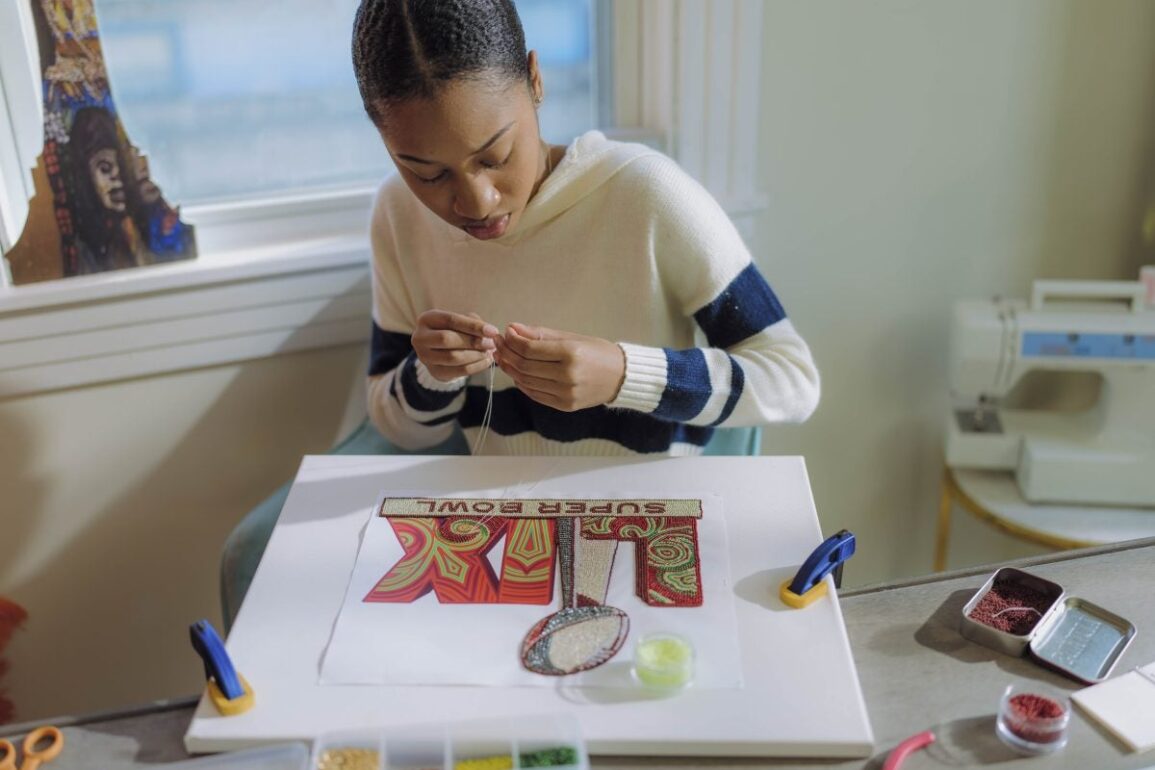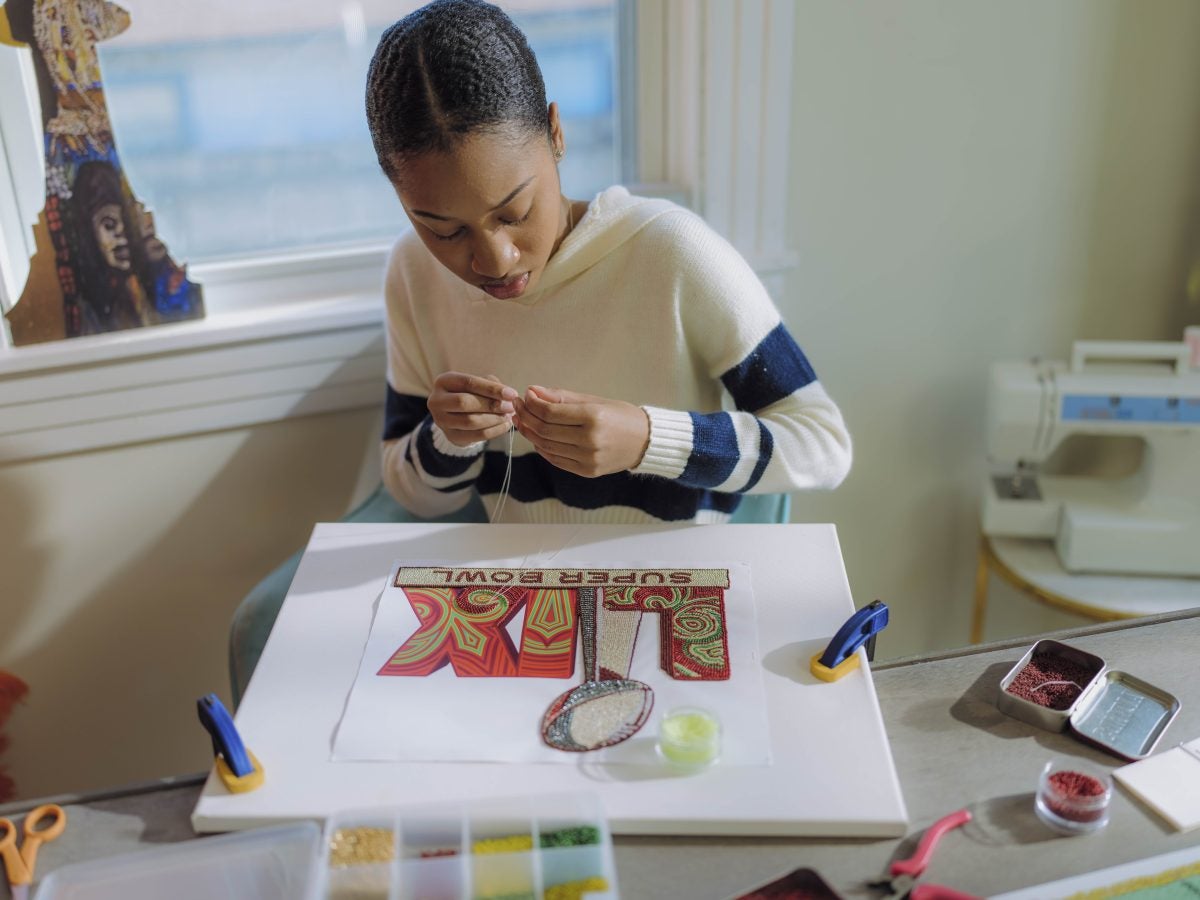
Super Bowl LIX is more than just football. It’s a celebration of the culture, history and artistry that parallels what is to become one of the most historic events of the year.
Because what is a New Orleans Super Bowl without the love and homage of the Big Easy itself? And this year, for the first time in NFL history, the essence of Black New Orleans – its soul, its resilience, its artistic legacy will take center stage as New Orleans artist Tahj “Queen Tahj” Williams will become the first Black woman to handcraft both the Super Bowl logo and theme art for Super Bowl LIX. Her achievement represents more than just a personal milestone – it’s a powerful recognition of Black cultural traditions on one of sport’s biggest stages.
Williams’ intricate beadwork designs draw deeply from the Black Masking tradition, a centuries-old cultural practice with profound historical significance. This artform, which features elaborate hand-sewn suits adorned with beads, feathers, and rhinestones, originated as a way for African Americans to honor Native Americans who provided refuge during slavery and to celebrate community resilience.
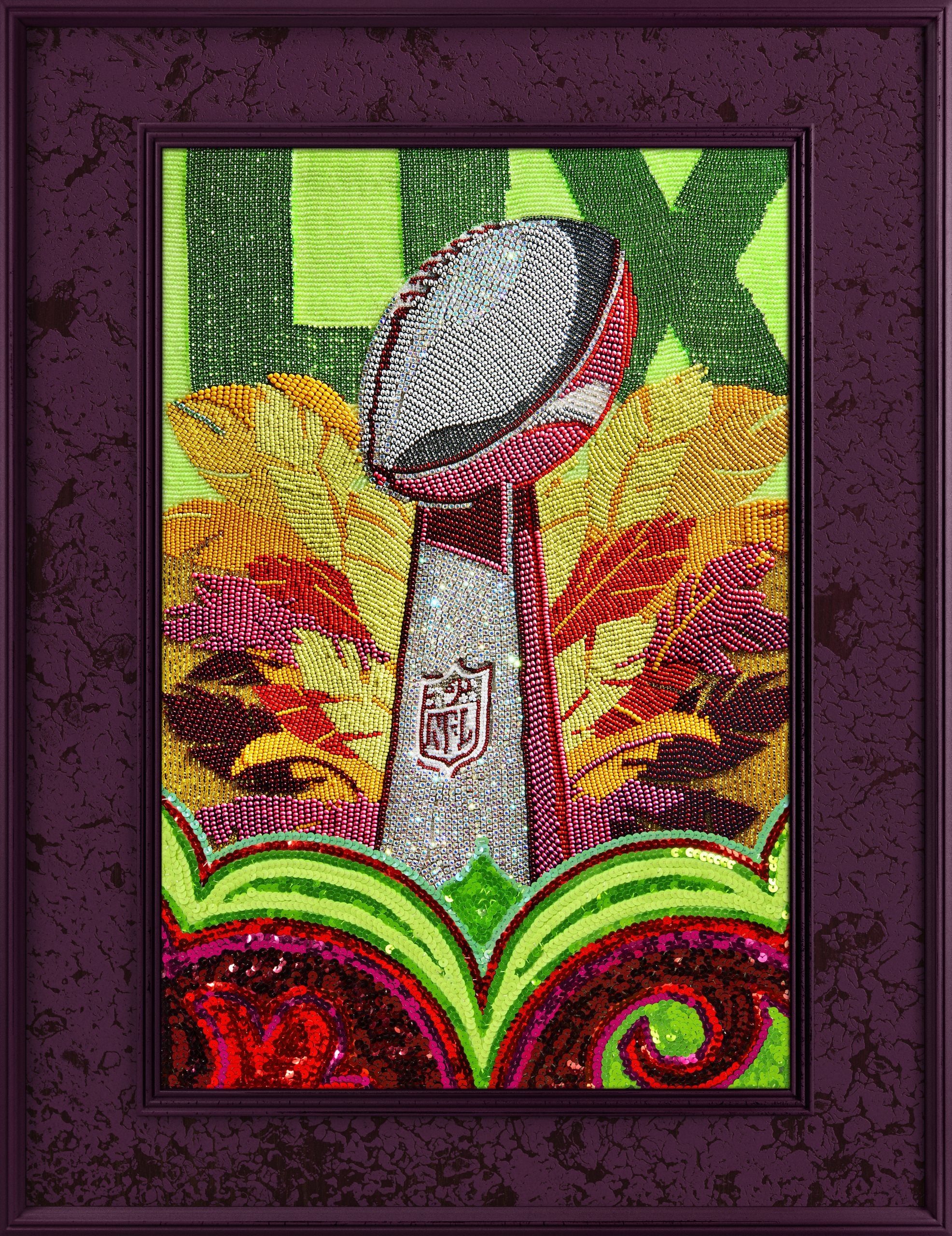



“This partnership is a dream come true and an opportunity to share the beauty of Black Masking culture with the world,” says Williams. Her connection to football runs deep – as the only girl and captain of her middle school football team, she learned early the power of breaking barriers. “Football has played a tremendous role in my life by teaching me to focus on my dreams without worrying about what society thinks is for girls or boys. It’s the same spirit of determination that shapes my work today.”
For the Super Bowl theme art, Williams created a masterpiece that weaves together tradition and innovation. Her design features a striking palette of bold pinks, deep reds, chartreuses and lush greens, each bead meticulously hand-sewn to create a visual symphony that captures both the vibrancy of New Orleans and the dignity of Black Masking culture. The result is breathtaking – and groundbreaking.
As a member of the Golden Eagles Tribe, Williams brings unparalleled expertise to this historic opportunity. The creation of Black Masking suits is a painstaking process, often taking more than a year of detailed handwork to complete. These suits represent the cornerstone of numerous cultural celebrations, from Mardi Gras to St. Joseph’s Night and Super Sunday. Each suit tells a story – and now Williams is telling hers on an unprecedented scale.
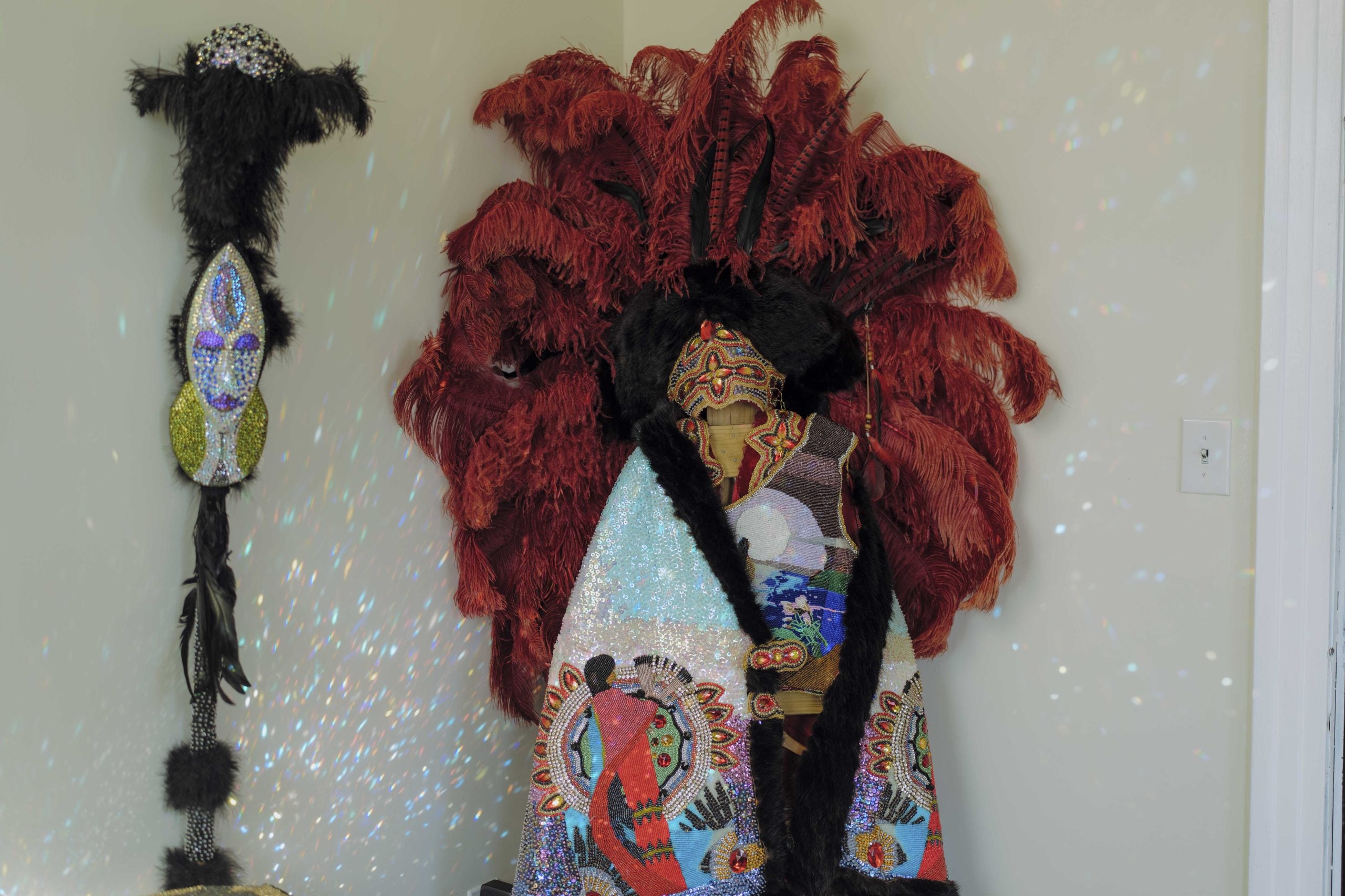



The NFL’s decision to showcase Williams’ artistry marks a significant step toward meaningful cultural representation. “We knew from the start that we wanted this year’s theme art to capture the essence of New Orleans,” explains Marissa Solis, NFL senior vice president of global brand and consumer marketing. “Queen Tahj’s deep connection to her community and extraordinary talent made her the perfect artist for this project.”
But this moment is bigger than football. It’s about recognition, representation, and the elevation of Black artistry to its rightful place. Williams’ artwork will be prominently displayed throughout New Orleans during Super Bowl week, appearing on digital game tickets, the official program cover, and in a striking installation on the exterior of the Hyatt Regency New Orleans. This visibility ensures that visitors and viewers worldwide will experience the depth and beauty of Black artistry and cultural traditions in a way that’s never been done before.
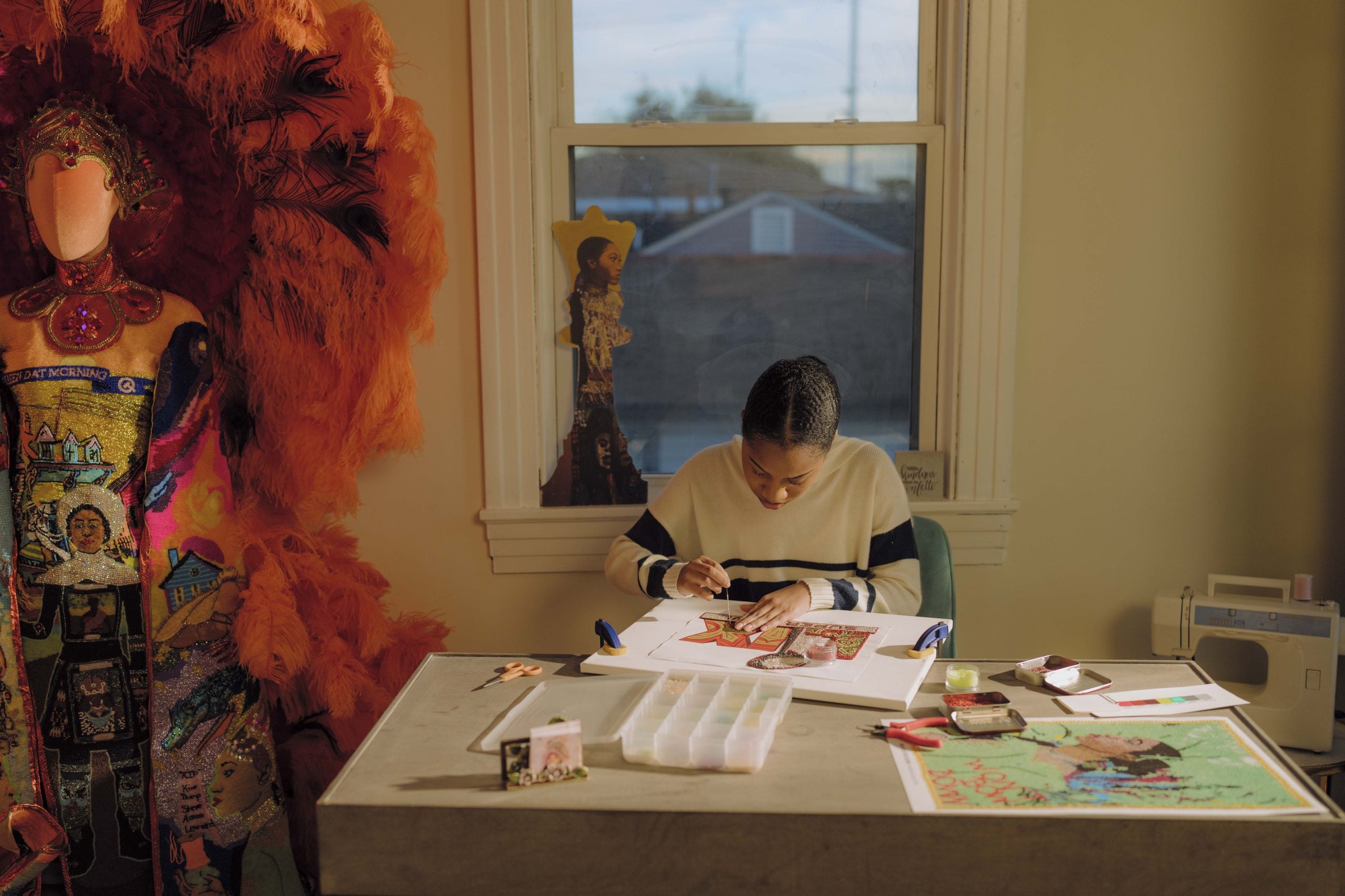



Through Queen Tahj’s vision, Super Bowl LIX won’t just be a celebration of football – it’ll be a celebration of culture, community, and the unstoppable power of Black creativity. And that’s something worth celebrating.


